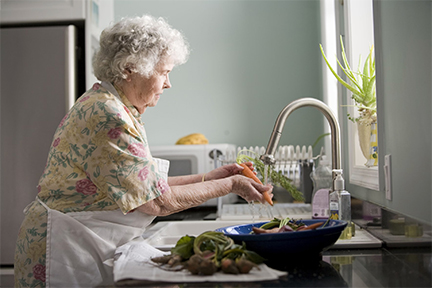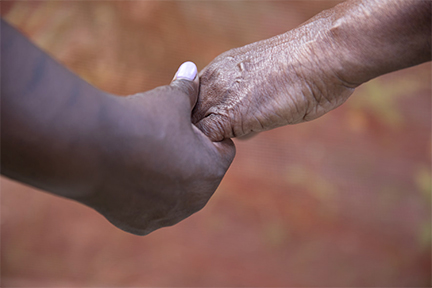
Fragility fractures are essentially broken bones from minimal trauma, such as a fall from standing height, or in some cases just standing for extended periods. This can pose a serious risk for seniors, often affecting their quality of life and independence.
While they sound rather intimidating, with the right planning and precautions they’re largely preventable.
Staying proactive regarding your health, alongside regular check-ups and making lifestyle adjustments can go a long way in this regard.
In this article, we uncover more about this condition, the various steps that seniors can take to prevent it as they enter deeper into their twilight years.
Build Bone Strength With Nutrient-Rich Foods
Like with most things in the realm of health and fitness, it all starts with your diet. Bone health, of course, is heavily influenced by what you eat, especially as you age. Consuming calcium, vitamin D, and other essential nutrients are key for maintaining your bone strength even in your 80s and 90s.
Calcium adds to the density of your bones, while vitamin D boosts its absorption, and both of them can be consumed with the right amount of dairy products, leafy greens, and other fortified foods. In the case of vitamins, consider salmon, tuna, and eggs, alongside optimum exposure to sunlight on a regular basis.
If you’re still struggling to get optimum levels of calcium and vitamin D, consider speaking with your physician on certain supplements which can help boost your figures.
When it comes to orthopedics, there are certain disparities across state lines that you need to be aware of. For instance, Orthopedics Services in Alabama might have a slightly different opinion regarding bone density and supplementation, as opposed to Texas or California.
Exercise Regularly
Weight-bearing exercises, like walking, jogging, and climbing stairs, stimulate bone growth. But that’s not all, strength training is equally important. Lifting weights or even using resistance bands helps build muscle, which protects your bones and keeps you steady on your feet.
And let’s not overlook balance exercises. Practicing yoga, tai chi, or even simple balance drills (like standing on one foot) can improve stability, helping you avoid falls in the first place. Many local community centers or senior centers offer classes tailored to this, so check those out!
Pay Attention To Medications 
Medications can sometimes sneakily weaken your bones. For example, long-term use of corticosteroids, some antacids, and certain anti-seizure drugs can cause bone loss.
If you’re on any of these, don’t panic! It doesn’t mean you’re destined for a fracture, but it’s something to keep in mind. Talk to your doctor about alternative options, dosage adjustments, or whether you need a bone density test.
Fall-Proof Your Living Space
Falls are a major cause of fractures, so making your home a safe space is key. Clear out clutter, secure loose rugs, and ensure all rooms are well-lit. Adding grab bars in bathrooms, non-slip mats, and handrails along stairs can make a huge difference. In other words, make sure your environment works for you, not against you.
A simple trick is to wear sturdy, non-slip footwear at home instead of just socks or slippers. Those little changes can make a big difference!
Watch Your Alcohol & Tobacco Intake
Both alcohol and tobacco have been shown to weaken bones over time. Heavy drinking can reduce bone density, increasing fracture risk, while smoking has been linked to slower healing after fractures. Cutting back or quitting can give your bones the best chance to stay strong.
If quitting is challenging, many communities offer programs to help reduce alcohol or quit smoking. Your doctor might also have resources or support systems available.
Consider Bone Density Testing
Bone density testing, like a DEXA scan, is simple and painless, yet incredibly useful. It can give you an accurate measure of your bone health, revealing any early signs of osteoporosis or weakening bones.
Many doctors recommend this test for women over 65 and men over 70, but it’s worth discussing earlier if you have risk factors, like a family history of osteoporosis.
The results can guide any specific interventions, such as medication or more tailored exercise plans, to strengthen your bones.
Take Falls Seriously: Don’t Ignore The First Slip
If you’ve taken a tumble, even without a fracture, it’s important not to brush it off. Treating one fall as a wake-up call can be a blessing in disguise.
Reach out to a physical therapist or your healthcare provider to assess your balance and walking patterns. They can provide exercises or mobility aids to keep you steady.
Also, some falls might be related to underlying conditions like vision issues, low blood pressure, or joint pain. Addressing these factors with a doctor can prevent future accidents.
Final Thoughts 
As you age, you are going to get more fragile, there is no way around this. But you can slow this down, and stack the odds in your favor by taking certain measures, as discussed above.
These thoughtful steps can dramatically reduce the chances of falling and fracturing your bones that can significantly limit your mobility and independence in your twilight years. So make sure to bring this up with your doctor just as you’re approaching 60 to get the right tips and advice.
